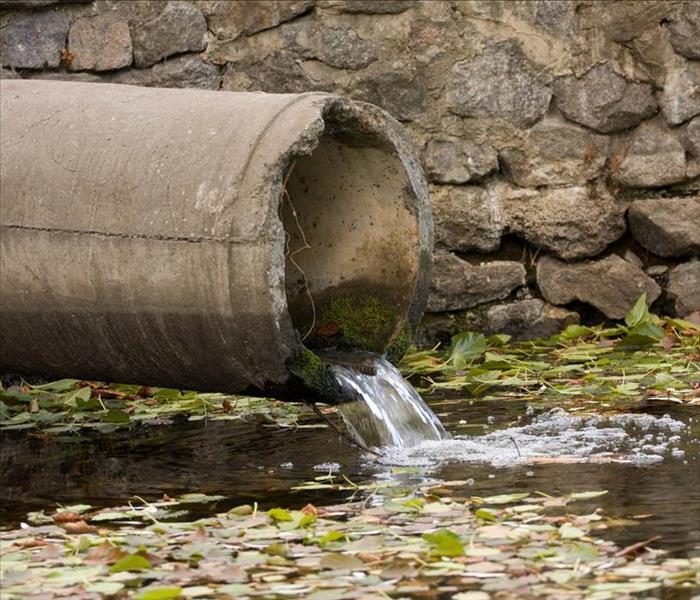What To Do When You Have Black Water From Flooding
4/12/2021 (Permalink)
When you have flood water in your building it is important to remove it as quickly as possible to mitigate the amount of water damage to your property and reduce the chance of future problems, such as mold growth. Before you can begin removing the water, you must first determine what type of water is present in the structure.
Categories of Water
The type of remediation you need depends on how the water in your structure is classified. Water from flooding is categorized in three ways:
- Water from a source that does not contain excessive microbial content is called clean water. Water from a broken supply line is an example of clean water.
- Water that contains a large number of microorganisms and their nutrients is considered gray water. Water from a sump pump failure is an example of gray water.
- Water that is grossly unsanitary because it contains pathogens such as sewage is called black water. Contaminated flood water is one such example.
Remediating Black Water
This type of water may contain hazardous substances such as human or animal waste, pesticides, gasoline, and heavy metals. Because special equipment and training are needed to safely remove this water, contact a professional storm damage remediation company in Salt Lake City, UT, rather than attempt to remove it yourself.
Standing water should be removed immediately and disposed of in a septic waste transporter or sanitary sewer system. The building should be dried out as soon as possible to reduce the spread of bacteria and mold.
Workers should use protective gear, such as respirators, goggles and rubber gloves when removing this type of water and wash their hands with soap and water before smoking, eating, or touching their mouths.
Because of the risk of contamination, flood water should always be treated as black water. Prompt remediation will reduce the amount of property damage and the risk of exposure to contaminants.





 24/7 Emergency Service
24/7 Emergency Service
